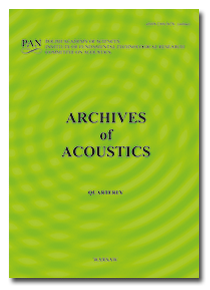10.2478/aoa-2014-0031
The Preparation of Soluble Cellouronic Acid Sodium Salt by 4-Acetamide-TEMPO Mediated Oxidation of Ultrasound-Pretreated Parenchyma Cellulose from Bagasse Pith
transform infrared spectroscopy (FT-IR) and Scanning electron microscopy (SEM).
References
Biliuta G., Fras L., Drobota M., Persin Z., Kreze T., Kleinschek K.S., Ribitsch V., Harabagui V., Coseri S. (2013), Comparison study of TEMPO and phthalimide-N-oxy (PINO) radicals on oxidation efficiency toward cellulose, Carbohydrate Polymers, 91, 502-507.
Chen W.S., Yu H.P., Liu Y.X., Chen P., Zhang M.X., Hai Y.F. (2011a), Individualization of cellulose nanofibers from wood using high-intensity ultrasonication combined with chemical pretreatments, Carbohydrate Polymers, 83, 1804-1811.
Chen W. S., Yu H.P., Liu Y.X. (2011b), Preparation of millimeter- long cellulose I nanofibers with diameters of 30-80 nm from bamboo fibers, Carbohydrate polymers, 86, 453-461.
Coseri S., Biliuta G., Simionescu B.C., Kleinschek K.S., Ribitsch V., Harabagiu V. (2013), Oxidized cellulose-Survey of the most recent achievements, Carbohydrate Polymers, 93, 207-215.
Hirota M., Tamura N., Saito T., Isogai A. (2009), Oxidation of regenerated cellulose with NaClO2 catalyzed by TEMPO and NaClO under acid-neutral conditions, Carbohydrate Polymers, 78, 330-335.
Iwamoto S., Kai W H., Isogai T., Saito T., Isogai A., Iwata T. (2010), Comparison study of TEMPO-analogous compounds on oxidation efficiency of wood cellulose for preparation of cellulose nanofibrils, Polymer Degradation and Stability, 95, 1394-1398.
Jambrak A.R., Lelas V., Herceg Z., Badanjak M., Batur V., Muza M. (2009), Advantages and disadvantages of high power ultrasound application in the dairy industry, Mljekarstvo, 59, 4, 267-281.
Kumar V., Yang T.R. (2002), HNO3/H3PO4-NANO2 mediated oxidation of cellulose – preparation and characterization of bioabsorbable oxidized celluloses in high yields and with different levels of oxidation, Carbohydrate Polymers, 48, 403-412.
Liu C.F., Sun R.C., Qin M.H., Zhang A.P., Ren J.K., Ye J., Luo W., Cao Z.N. (2008), Succinoylation of sugarcane bagasse under ultrasound irraditation, Bioresource Technology, 99, 5, 1465-1473.
Reina T., Tsuguyuki S., Akira I. (2012), Cellulose nanofibrils prepared from softwood cellulose by TEMPO/NaClO/NaClO2 systems in water at pH 4.8 or 6.8, International Journal of Biological Macromolecules, 51, 228-234.
Ren Q.L. (2003), Optimization design and analysis of experiments [in Chinese: 试验优化设计与分析], Higher Education Press, Beijing, China.
Shibata I., Isogai A. (2003), Depolymerization of cellouronic acid during TEMPO-mediated oxidation, Cellulose, 10, 151-158.
Shinoda R., Saito T., Okita Y., Isogai A. (2012), Relationship between length and degree of polymerization of TEMPO-oxidized cellulose nanofibrils, Biomacromolecules, 13, 842-849.
Tang A., Zhang H., Chen G., Xie G.H., Liang W.Z. (2005), Influence of ultrasound treatment on accessibility and regioselective oxidation reactivity of cellulose, Ultrasonics Sonochemistry, 12, 467-472.
Yu H., Liu R.G., Shen D W., Wu Z.H., Huang Y. (2008), Arrangement of cellulose microfibrils in the wheat straw cell wall, Carbohydrate Polymers, 72, 122-127.
Vilkhu K., Mawson R., Simons L., Bates D. (2008), Applications and opportunities for ultrasound assisted extraction in the food industry—a review, Innovative Food Science and Emerging Technologies, 9, 2, 161-169.
Zhang K., Fischer S., Geissler A., Brendler E. (2012), Analysis of carboxylate groups in oxidized never-dried cellulose II catalyzed by TEMPO and 4-acetamide-TEMPO, Carbohydrate Polymers, 87, 894-900.
DOI: 10.2478/aoa-2014-0031





